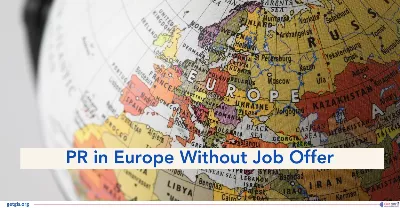M1 Visa USA for 2025-26: How to Apply, Requirements, and Benefits
Updated On
-
Copy link
The M1 Visa USA for 2025-26 is a great option if you are interested in gaining specialised, practical skills. You must, however, be enrolled as a full-time student in a vocational or other nonacademic program at a US institute.
Limited-time offer : Access a free 10-Day IELTS study plan curated for you

Table of Contents
If you are an international student pursuing vocational or technical training in the US, you may be eligible for an M1 visa USA. This visa allows you to attend non-academic institutions like flight schools or culinary arts programmes full-time in the country
Unlike the F-1 visa, the M-1 is typically granted for a shorter duration and focuses on hands-on, career-oriented learning. M-1 students can also engage in practical training, but only after completing their studies.
So, are you ready to turn your academic dreams into reality? The M1 visa is your ticket to a dynamic learning experience in the land of innovation. Join us as we unravel the intricacies of the M1 visa, answering the crucial questions and details you are curious about
What is an M-1 Student Visa?
An M1 Visa means international students can engage in practical, non-academic courses in the United States. These include cooking classes, language programs, flight school, cosmetology, mechanical education, and other vocational studies. A junior or community college typically offers these courses.
Some of the rules of US M1 visa are:
- It's a temporary permit valid for one year, with the option to extend for up to three years.
- M1 Visa holders can only study part-time under certain conditions for a maximum of six months.
- School transfers are only allowed within the initial six months of the program.
Explore: Cost of Study in USA for Indian Students in 2026
M-1 Visa Key Benefits and Limitations in 2025-26
Acquiring a US M1 visa comes with several advantages and limitations, allowing individuals to pursue their studies and reside in the United States. Here are the key benefits and limitations summarized
Benefits
- Study and Reside in the U.S.: M1 visas provide the opportunity to both study and live in the United States
- Extensions Granted: Extensions are possible, with a maximum program completion time of 3 years. Extensions may be considered for bona fide students facing delays due to educational or medical reasons (excluding academic probation or suspension). It is essential to maintain status throughout the extension period
- Immigration Benefits for Family: M1 visa holders can bring their spouse and minor children (under M2 status) into the U.S. Although family members may not work, M2 children are eligible to attend schools for kindergarten through 12th grade. Each M2 dependent requires an issued SEVIS Form I-20 from the institution
- No Annual Limit: Unlike some visas, there is no annual limit on the number of M1 visas issued, providing flexibility for eligible applicants
Limitations
Limitations in Work: M1 visa holders are not allowed to work along with pursuing their studies. But they are eligible to apply for any practical training related to their opted subject of study only after completing 6 months of their programme.
School Transfer: Transfer to a different school is only permitted in the first six months of the programme.
Also Read: Everything You Need to Know About Intakes in USA
M-1 Visa Requirements in 2025-26
When applying for an M1 visa, it's crucial to compile a comprehensive set of documents to support your application. Here's a checklist of essential documents required for the M1 visa application process
- Ensure your passport is valid for at least 6 months beyond the visa expiration date
- Include the confirmation page from your completed DS-160 application
- Provide the letter confirming your visa appointment
- Submit one recent passport-sized photograph for your visa application
- Present receipts as proof of fee payments related to your visa application
- I-20 Form: Include the original and a copy of the I-20 form issued by the institution
- Educational Qualifications:
- Degrees and diplomas
- Transcripts
- Standardized test scores, etc
- Financial Stability Proof:
- Bank statements for the last 3 years
- Tax information for the last 3 years
- Details of loans (if applicable)
- Scholarship information (if applicable)
- Support from a U.S. Resident: If you'll be supported by a U.S. resident, submit Form I-134 (Affidavit of Support) along with the individual's bank and tax return information for the last 3 years.
Who Can Apply for an M1 Visa in 2025-26?
Given that there is no limit on the number of visas issued annually, meeting the specified M1 visa eligibility requirements is the sole criterion for acceptance. The eligibility conditions encompass:
- Acceptance at a SEVP institution (Student and Exchange Visitor Program)
- Full payment of the program's total cost before commencing studies.
- Demonstrated high English proficiency, verified through standardized tests like TOEFL with a score ranging from 79 to 100, or IELTS with a score ranging from 6.0 to 7.0
- Non-immigrant intent, indicating a commitment to return to your home country post-course completion. This requires evidence of strong ties, such as a permanent foreign address or family connections.
- Financial self-sufficiency is substantiated by submitting supporting documents like bank account statements to verify your financial status.
Also Read: Cost of Living in the USA for Students & Professionals in 2025
M-1 Visa Application Process in 2025-26
To apply for an M-1 Student Visa, individuals should follow a step-by-step process outlined by the U.S. Department of State. This involves obtaining a Form I-20 from a Student and Exchange Visitor Information System (SEVIS)-approved school. Successful completion of these steps allows prospective students to pursue vocational studies in the US.

Step 1: Obtain Your I-20 Form
After being enrolled and accepted into the SEVP (vocational school), pay the SEVIS I-901 fee, and receive Form I-20. This is crucial to initiate the M1 visa application process and subsequently, a visa interview at the U.S. Embassy or consulate.
Step 2: Submit the DS-160 Form Online
Complete and submit the DS-160 form online, providing relevant information about your background, objectives in the US, and program of study. Retain the confirmation code for the subsequent interview and document compilation.
Step 3: Pay the Visa Application Fee
Remit the non-refundable M1 visa application fee of $185, keeping the receipts as proof. Be aware of potential additional fees based on the Embassy and any specific fees for certain countries.
Step 4: Pay the SEVIS I-901 Fee
To initiate the payment of the I-901 SEVIS Fee, it is essential to first obtain the Form I-20 from a Designated School Official (DSO) at the intended educational institution in the US.
Prospective F and M students must furnish the following details to pay the I-901 SEVIS Fee:
- Personal Information: Name, address, date of birth, and email address.
- Nationality Details: Country of birth and country of citizenship.
- School Information: School Code, as indicated on the Form I-20 titled "Certificate of Eligibility for Nonimmigrant Student Status."
- SEVIS Identification Number: This number is also provided on the Form I-20
Step 5: Schedule Your Interview
Arrange your visa appointment interview as early as possible, considering the high workload of US Embassies. Upon scheduling, obtain your interview appointment letter for inclusion in your document file.
Step 6: Compile Your Document File
Assemble a complete document file for your visa appointment, including all necessary forms.
Step 7: Attend Your Interview
Participate in your visa interview with all documents prepared. Anticipate questions regarding your intentions in the US, financial status, and ties to your home country. If bringing dependents, be ready to provide evidence of your relationship with them.
Also Read: USA Study Visa Without IELTS : Eligibility and Requirements
M-1 Visa Costs and Processing Time in 2025-26
M1 Visa Processing Time
Extended Visa Issuance Timeline: In 2025, M-1 visas can now be issued up to 365 days before the start date of a course of study, which is a major change from the previous 120-day rule.
Appointment Delays: Due to the new fees and an increase in application volumes, students should be advised that visa appointment wait times might be longer than usual.
Cost of M-1 Student Visa
The M1 Visa Cost in the USA comprises a non-refundable visa application fee of USD 185 (INR 15,414). In addition to this, applicants are required to pay the SEVIS I-901 fee, amounting to
USD 350 (INR 29,161).
It's essential to consider both these fees when budgeting for the M1 visa application process, ensuring that all financial aspects are adequately covered for a smooth and comprehensive application experience.
Although the M-1 visa fees in 2025 remain the same, there are certain key changes that you must consider:
- Visa Integrity Fee: In 2025, a mandatory Visa Integrity Fee of USD 250 has been implemented. This fee makes sure that there will be no visa overstays and promotes compliance.
- I-94 Arrival/Departure Form Charge: You can include a note about a new USD charge of 24 for the I-94 form.
Navigating the M1 Student Visa Journey with GetGIS
In conclusion, securing an M1 student visa is a crucial step for those aspiring to pursue vocational or non-academic studies in the United States. Throughout this process, obtaining accurate and timely information is paramount.
As you embark on this adventure, remember that meticulous preparation, adherence to requirements, and utilizing expert assistance like GetGIS can contribute to a smoother and more successful M1 visa application experience. Stay informed, stay prepared, and soon, you may find yourself on the path to educational and professional enrichment in the USA. Schedule a Free Consultation
- Tags
- Study Abroad
Limited-time offer : Access a free 10-Day IELTS study plan curated for you

Frequently Asked Questions
What are the limitations of the M1 visa?
How can I stay in the US after an M1 visa expires?
How can I extend my M1 visa?
Can I change my M1 visa to a green card?
Is an M-1 visa valid for 5 years?
Is an M1 visa easy to get?





